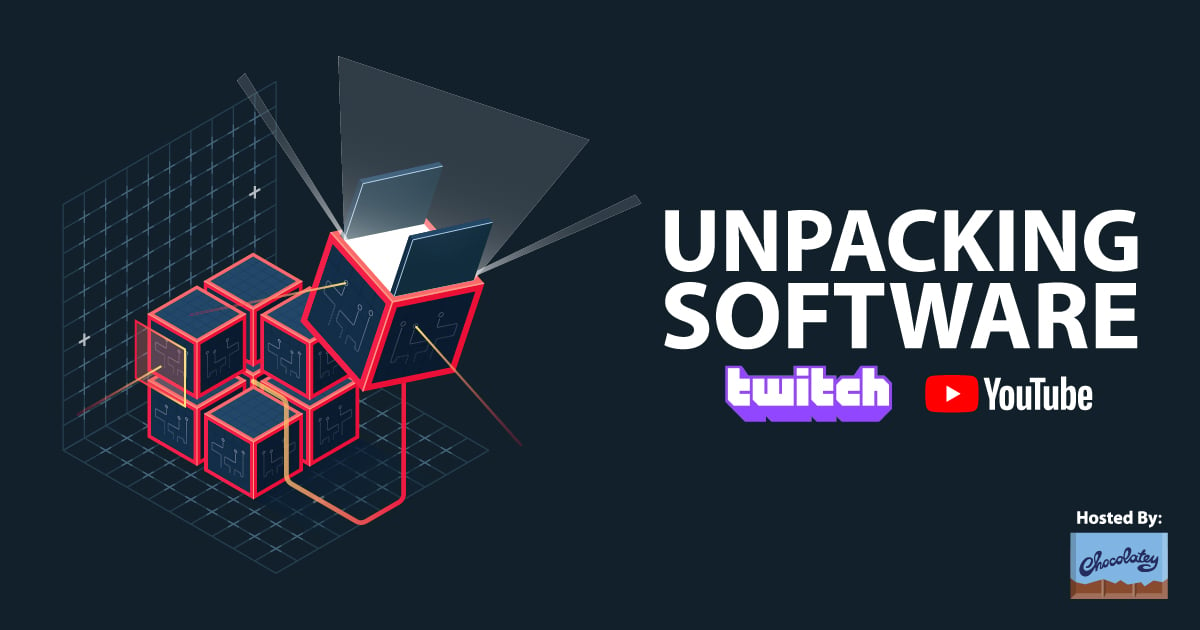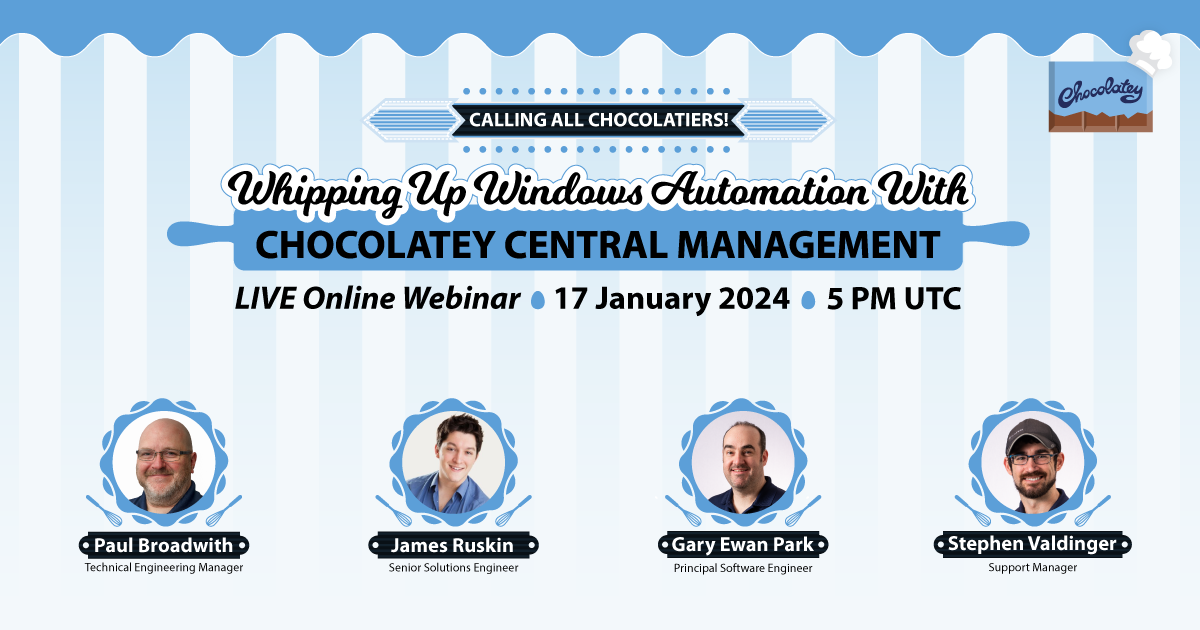
Downloads:
101
Downloads of v 181.0.0:
48
Last Update:
28 Aug 2024
Package Maintainer(s):
Software Author(s):
- Alcaro
Tags:
flips floating-ips ips international-patching-system bps beat-protocol-system rom-patch rom patcher rom-hacking- Software Specific:
- Software Site
- Software Source
- Software License
- Software Docs
- Software Issues
- Package Specific:
- Package Source
- Package outdated?
- Package broken?
- Contact Maintainers
- Contact Site Admins
- Software Vendor?
- Report Abuse
- Download
flips (Portable)
This is not the latest version of flips (Portable) available.
- 1
- 2
- 3
181.0.0 | Updated: 28 Aug 2024
- Software Specific:
- Software Site
- Software Source
- Software License
- Software Docs
- Software Issues
- Package Specific:
- Package Source
- Package outdated?
- Package broken?
- Contact Maintainers
- Contact Site Admins
- Software Vendor?
- Report Abuse
- Download
Downloads:
101
Downloads of v 181.0.0:
48
Maintainer(s):
Software Author(s):
- Alcaro
flips (Portable) 181.0.0
This is not the latest version of flips (Portable) available.
Legal Disclaimer: Neither this package nor Chocolatey Software, Inc. are affiliated with or endorsed by Alcaro. The inclusion of Alcaro trademark(s), if any, upon this webpage is solely to identify Alcaro goods or services and not for commercial purposes.
- 1
- 2
- 3
All Checks are Passing
3 Passing Tests
Deployment Method: Individual Install, Upgrade, & Uninstall
To install flips (Portable), run the following command from the command line or from PowerShell:
To upgrade flips (Portable), run the following command from the command line or from PowerShell:
To uninstall flips (Portable), run the following command from the command line or from PowerShell:
Deployment Method:
This applies to both open source and commercial editions of Chocolatey.
1. Enter Your Internal Repository Url
(this should look similar to https://community.chocolatey.org/api/v2/)
2. Setup Your Environment
1. Ensure you are set for organizational deployment
Please see the organizational deployment guide
2. Get the package into your environment
Option 1: Cached Package (Unreliable, Requires Internet - Same As Community)-
Open Source or Commercial:
- Proxy Repository - Create a proxy nuget repository on Nexus, Artifactory Pro, or a proxy Chocolatey repository on ProGet. Point your upstream to https://community.chocolatey.org/api/v2/. Packages cache on first access automatically. Make sure your choco clients are using your proxy repository as a source and NOT the default community repository. See source command for more information.
- You can also just download the package and push it to a repository Download
-
Open Source
-
Download the package:
Download - Follow manual internalization instructions
-
-
Package Internalizer (C4B)
-
Run: (additional options)
choco download flips --internalize --version=181.0.0 --source=https://community.chocolatey.org/api/v2/ -
For package and dependencies run:
choco push --source="'INTERNAL REPO URL'" - Automate package internalization
-
Run: (additional options)
3. Copy Your Script
choco upgrade flips -y --source="'INTERNAL REPO URL'" --version="'181.0.0'" [other options]See options you can pass to upgrade.
See best practices for scripting.
Add this to a PowerShell script or use a Batch script with tools and in places where you are calling directly to Chocolatey. If you are integrating, keep in mind enhanced exit codes.
If you do use a PowerShell script, use the following to ensure bad exit codes are shown as failures:
choco upgrade flips -y --source="'INTERNAL REPO URL'" --version="'181.0.0'"
$exitCode = $LASTEXITCODE
Write-Verbose "Exit code was $exitCode"
$validExitCodes = @(0, 1605, 1614, 1641, 3010)
if ($validExitCodes -contains $exitCode) {
Exit 0
}
Exit $exitCode
- name: Install flips
win_chocolatey:
name: flips
version: '181.0.0'
source: INTERNAL REPO URL
state: present
See docs at https://docs.ansible.com/ansible/latest/modules/win_chocolatey_module.html.
chocolatey_package 'flips' do
action :install
source 'INTERNAL REPO URL'
version '181.0.0'
end
See docs at https://docs.chef.io/resource_chocolatey_package.html.
cChocoPackageInstaller flips
{
Name = "flips"
Version = "181.0.0"
Source = "INTERNAL REPO URL"
}
Requires cChoco DSC Resource. See docs at https://github.com/chocolatey/cChoco.
package { 'flips':
ensure => '181.0.0',
provider => 'chocolatey',
source => 'INTERNAL REPO URL',
}
Requires Puppet Chocolatey Provider module. See docs at https://forge.puppet.com/puppetlabs/chocolatey.
4. If applicable - Chocolatey configuration/installation
See infrastructure management matrix for Chocolatey configuration elements and examples.
This package was approved by moderator flcdrg on 02 Sep 2024.
Floating IPS (Flips) is a fully featured GUI program for applying IPS and BPS patches.
IPS and BPS patches are common ways to distribute rom hacks.
Remove-Process "flips"$ErrorActionPreference = 'Stop' # stop on all errors
$toolsDir = "$(Split-Path -Parent $MyInvocation.MyCommand.Definition)"
# $toolsDir = "C:\ProgramData\chocolatey\lib\flips\tools"
# $zipArchive = Join-Path $toolsDir -ChildPath 'flips-windows.zip'
$unzipDir = Join-Path $toolsDir -ChildPath 'flips-windows'
$executableDir = Join-Path $unzipDir -ChildPath 'builds\windows-x64-gui.zip'
$removeRegistryKeys = Join-Path $toolsDir -ChildPath 'removeregistrykeys.ps1'
# Check if running in administrative shell
function Test-Administrator {
[OutputType([bool])]
param()
process {
[Security.Principal.WindowsPrincipal]$user = [Security.Principal.WindowsIdentity]::GetCurrent();
return $user.IsInRole([Security.Principal.WindowsBuiltinRole]::Administrator);
}
}
# Until the following feature is implemented, I prefer to remove process in both chocolateyuninstall and chocolateybeforemodify:
# https://github.com/chocolatey/choco/issues/1731
Remove-Process "flips"
Uninstall-ChocolateyZipPackage -Packagename $env:ChocolateyPackageName -ZipFileName '$zipArchive' # Only necessary if you did not unpack to package directory - see https://docs.chocolatey.org/en-us/create/functions/uninstall-chocolateyzippackage
# Uninstall-ChocolateyZipPackage will remove the FILES from the archive.
# This removes the DIRECTORY they were extracted too.
Remove-Item $unzipDir -Recurse -Force
# Remove desktop shortcut if it exists (it's plausible the user might have removed it)
$exists = [bool](Test-Path -Path "$env:UserProfile\Desktop\Floating IPS.lnk")
if ($exists) {
Remove-Item "$env:UserProfile\Desktop\Floating IPS.lnk"
}
# Check if start menu shortcut exists (it's plausible the user might have removed it)
$exists = [bool](Test-Path -Path "$env:ProgramData\Microsoft\Windows\Start Menu\Programs\Floating IPS.lnk")
# If administrative shell
if (Test-Administrator) {
# Remove start menu shortcut if it exists
if ($exists) {
Remove-Item "$env:ProgramData\Microsoft\Windows\Start Menu\Programs\Floating IPS.lnk"
}
} else {
# Untested in real non-admin Choco scenario
if ($exists) {
Write-Warning "You are not running from an elevated shell. Start menu shortcut will not be removed.";
}
}
# Remove registry keys (mostly file associations)
& $removeRegistryKeys $executableDir
md5: 28E449DADF0D76D80BA3C80B8A573979 | sha1: 7FBC14753AF7013D7CCA62B2DEC9976505F9DEB4 | sha256: 28502333D23F030ACF90D114003128C5499763608502CFF7282BC6CFA36C1FE4 | sha512: EDF1E82E2564FE51A41B7295E502A8230582E1EE4875826DAB2E4B562723643D26484FA15C268A30D83918803FBE41EC39F89A803D7F67860EB33E0A1952B4EF From: <https://github.com/Alcaro/Flips/blob/master/COPYING>
LICENSE
Floating IPS is licensed under GNU General Public License, version 3.0 or higher. The full legal
text can be found in COPYING.gpl3; a rough interpretation (for non-lawyers only) follows:
- You must credit the author. Don't claim it as your own. You may modify it and take credit for your
modifications, but the author (Alcaro) must be credited for the original software.
- If you modify this software, it must clearly be labeled as a modification.
- Any applications containing any part of this software must provide the full source code needed to
modify and rebuild this application, under the same license. (This COPYING file is not part of the
license; you may, if you wish, remove it and keep only the GPL.)
- The author claims no copyright or other rights over input, output, or error messages generated by
this tool. Use it however you want.
param ($executableDir)
$ErrorActionPreference = 'Stop' # stop on all errors
function Remove-RegistryValueByValueData($keyPath, $targetValueData) {
# IMPROVE Can this be done better with Select-Object?
$key = Get-Item -Path $keyPath
$keyValues = $key.Property # easier to understand (for me at least)
$found = $false
foreach ($value in $keyValues) {
$data = Get-ItemPropertyValue -Path $keyPath -Name $value # Get the data of the value
if ($data -eq $targetValueData) {
# Check if the data matches $targetValueData
# Remove the value
try {
Remove-ItemProperty -Path $keyPath -Name $value # PowerShell bug causes error if name is '(default)'
Write-VerboseRemovedValueData $keyPath $value $targetValueData
$found = $true
return # In this script, we don't expect multiple values with the same data, so we can return as soon as we find the data.
} catch {
if ($_.Exception.Message -match 'Property \(default\) does not exist at path*') {
$(Get-Item -Path $keyPath).OpenSubKey('', $true).DeleteValue('') # "(default)" actually just means empty string (Remove-ItemProperty does not accept empty string).
Write-VerboseRemovedValueData $keyPath $value $targetValueData
$found = $true
return # In this script, we don't expect multiple values with the same data, so we can return as soon as we find the data.
} else {
Write-Error "An ItemNotFoundException occurred: $_"
}
}
}
}
if (-Not ($found)) {
Write-VerboseValueDataNotFound $keyPath $targetValueData
}
}
# path
function Test-PathBool($p) {
return [bool](Test-Path -Path $p)
}
# path, value
function Test-ValueNameBool($p, $n) {
return [bool](Get-ItemProperty -Path $p -Name $n -ea 0)
}
function Get-ValueData($p, $n) {
return Get-ItemPropertyValue -Path $p -Name $n
}
function Test-ValueDataBool($p, $n, $d) {
$vD = Get-ValueData $p $n
return ($vD -eq $d)
}
# path, extra
Function Write-VerboseRemovedKey($p, $e) {
Write-Verbose "REMOVED: key '$p'.$e".Replace("REGISTRY::", "")
}
#path, value name, extension, extra
Function Write-VerboseRemovedValueName($p, $n, $e) {
$msg = "REMOVED: value '$n' in key '$p'.$e".Replace("REGISTRY::", "")
Write-Verbose $msg
}
Function Write-VerboseRemovedValueData($p, $n, $d) {
Write-Verbose "REMOVED: value '$n' with data '$d' in key '$p'.".Replace("REGISTRY::", "")
}
Function Write-VerboseKeyNotFound($p, $e) {
$msg = "NOT FOUND: key '$p'.$e".Replace("REGISTRY::", "")
Write-Verbose $msg
}
Function Write-VerboseValueNameNotFound($p, $n, $e) {
$msg = "NOT FOUND: value '$n' in key '$p'.$e".Replace("REGISTRY::", "")
Write-Verbose $msg
}
Function Write-VerboseValueDataNotFound($p, $d, $e) {
$msg = "NOT FOUND: value with data '$d' in key '$p'.$e".Replace("REGISTRY::", "")
}
# For when you looked for a value with a specifc name and specific data. Unused.
Function Write-VerboseValueNameDataNotFound($p, $d, $e) {
$msg = "NOT FOUND: value with data '$d' in key '$p'.$e".Replace("REGISTRY::", "")
Write-Verbose $msg
}
function Get-ValueCount($p) {
return $(Get-Item -Path $p).Property.Count
}
function Get-SubkeyCount($p) {
return $(Get-ChildItem -Path $p).Name.Count
}
function Write-VerboseNoFileHandlersRemaining($p) {
Write-Verbose "No file handlers remaining in '$p'. Will attempt to remove empty key.".Replace("REGISTRY::", "")
}
function Write-VerboseFileHandlersStillRemaining($p) {
Write-Verbose "File handlers remaining in key '$p'. Will NOT remove the key.".Replace("REGISTRY::", "")
}
function Test-PathPermission ($p) {
# The UserChoice key usually has weird permissions, which will likely
# prevent us from removing it, which is okay.
# The original idea was to just try Remove-Item, but Remove-Item gives
# misleading error message, "subkey does not exist"
# (this seems like a bug in PowerShell.) New-ItemProperty gives
# a correct message.
# Test permission
try {
New-ItemProperty -Path $p -Name "PermissionTestRemoveMe" -Value "" -PropertyType String -Force | Out-Null
Remove-ItemProperty -Path $p -Name "PermissionTestRemoveMe"
return $true # Permission was granted!
} catch {
if ($_.Exception.Message -match "Requested registry access is not allowed.") {
return $false
} else {
Write-Warning "Unexpected error occurred: $_"
}
}
}
# See if executable matches
function Test-AutoFileProgram($executable) {
$p = "REGISTRY::HKEY_CURRENT_USER\Software\Classes\$executable" + "_auto_file\shell\open\command"
$pathOk = Test-PathBool($keyPath)
$match = $false # initialize variable
if ($pathOk) {
$targetDataTrailEnd = $executable + '" "%1"'
$firstValue = $(Get-Item -Path $keyPath).Property[0] # there should only be one value though
$data = $(Get-ItemPropertyValue -Path $keyPath -Name $firstValue)
$match = $data.EndsWith($targetDataTrailEnd)
} else {
Write-VerboseKeyNotFound $p
}
return $match
}
function Remove-AAToast($n) {
# file association values in `HKEY_CURRENT_USER\Software\Microsoft\Windows\CurrentVersion\ApplicationAssociationToasts`
$p = "REGISTRY::HKEY_CURRENT_USER\Software\Microsoft\Windows\CurrentVersion\ApplicationAssociationToasts"
$valueOk = Test-ValueNameBool $p $n
if ($valueOk) {
Remove-ItemProperty -Path $p -Name $n
Write-VerboseRemovedValueName $p $n
} else {
Write-VerboseValueNameNotFound $p $n
}
}
function Remove-FileAssocInClasses ($extension, $progId) {
# Does not include the key in `HKEY_CURRENT_USER\Software\Classes\Applications`
# IMPROVE Possibly a potiential improvement: Make a separate function to clean up empty keys, run it at the end of the end of the script, instead of cleaning as we go. However, cleaning up and check for subkeys was a practical way to check if handlers remaining.
$extensionU = $extension.ToUpper()
$keyPath = "REGISTRY::HKEY_CURRENT_USER\Software\Classes\.$extension"
$pathOk = Test-PathBool($keyPath)
if ($pathOk) {
Remove-RegistryValueByValueData $keyPath $progId
$valueCount = Get-ValueCount $keyPath
$subKeyCount = Get-SubkeyCount $keyPath
if (($valueCount -eq 0) -And ($subKeyCount -eq 0)) {
Write-VerboseNoFileHandlersRemaining $keyPath
Remove-Item -Path $keyPath -Force
Write-VerboseRemovedKey $keyPath
} else {
Write-VerboseFileHandlersStillRemaining $keyPath
}
} else {
Write-VerboseKeyNotFound $keyPath
}
$keyPath = "REGISTRY::HKEY_CURRENT_USER\Software\Classes\$progId"
$pathOk = Test-PathBool $keyPath
if ($pathOk) {
Remove-Item -Path $keyPath -Recurse -Force
Write-VerboseRemovedKey $keyPath
} else {
Write-VerboseKeyNotFound $keyPath
}
}
# Remove items in `HKEY_CURRENT_USER\Software\Microsoft\Windows\CurrentVersion\Explorer\FileExts`
function Remove-FileAssocInFileExts ($extension, $exe, $id) {
$extensionU = $extension.ToUpper() # upper-case
# Don't continue if this parent key doesn't exist
$keyPath = "REGISTRY::HKEY_CURRENT_USER\Software\Microsoft\Windows\CurrentVersion\Explorer\FileExts\.$extension"
$pathOk = Test-PathBool $keyPath # Test if path exists
if (-not $pathOk) {
Write-VerboseKeyNotFound $keyPath
return
}
# This key holds programs on the "Open with" context menu and the order in which each application was most recently used.
$keyPath = "REGISTRY::HKEY_CURRENT_USER\Software\Microsoft\Windows\CurrentVersion\Explorer\FileExts\.$extension\OpenWithList"
$targetValueData = $exe
$pathOk = Test-PathBool $keyPath # Test if path exists
if ($pathOk) {
Remove-RegistryValueByValueData $keyPath $targetValueData
$valueCount = Get-ValueCount $keyPath
$subkeyCount = Get-SubkeyCount $keyPath
# le = "less than or equal to"; this key having subkeys would be an edge case
if (($valueCount -le 1) -And ($subkeyCount -eq 0)) {
# only values left: MRUList value, and plausibly the Default value (the latter is not counted by .Count)
Write-VerboseNoFileHandlersRemaining $keyPath
Remove-Item -Path $keyPath
Write-VerboseRemovedKey $keyPath
} else {
$handlersRemaining = $true
Write-VerboseFileHandlersStillRemaining $keyPath
}
} else {
Write-VerboseKeyNotFound $keyPath
}
# This key also holds handlers.
$keyPath = "REGISTRY::HKEY_CURRENT_USER\Software\Microsoft\Windows\CurrentVersion\Explorer\FileExts\.$extension\OpenWithProgids"
$targetValueName = $id
$pathOk = Test-PathBool $keyPath # Test if path exists
$valueOk = Test-ValueNameBool $keyPath $targetValueName # Test value name exists
if ($pathOk) {
if ($valueOk) {
Remove-ItemProperty -Path $keyPath -Name $targetValueName
Write-VerboseRemovedValueName $keyPath $targetValueName
} else {
Write-VerboseValueNameNotFound $keyPath $targetValueName
}
$valueCount = Get-ValueCount $keyPath
$subkeyCount = Get-SubkeyCount $keyPath
# Again, the (Default) value isn't counted
if (($valueCount -eq 0) -And ($subkeyCount -eq 0)) {
Write-VerboseNoFileHandlersRemaining $keyPath
Remove-Item -Path $keyPath
Write-VerboseRemovedKey $keyPath
} else {
Write-VerboseFileHandlersStillRemaining $keyPath
}
} else {
Write-VerboseKeyNotFound $keyPath
}
}
function Remove-FileAssocInFileExtsFinal($extension, $id) {
$extensionU = $extension.ToUpper() # upper-case
# Don't continue if this parent key doesn't exist
$keyPath = "REGISTRY::HKEY_CURRENT_USER\Software\Microsoft\Windows\CurrentVersion\Explorer\FileExts\.$extension"
$pathOk = Test-PathBool $keyPath # Test if path exists
if (-not $pathOk) {
Write-VerboseKeyNotFound $keyPath
return
}
# This key holds says which program to always be used for .$ext. This may also be controlled with keys in Classes.
$keyPath = "REGISTRY::HKEY_CURRENT_USER\Software\Microsoft\Windows\CurrentVersion\Explorer\FileExts\.$extension\UserChoice"
$targetValueName = "ProgId"
$targetValueData = $id
$pathOk = Test-PathBool $keyPath # Test if path exists
$permissionOk = $true # Initialize the variable
if ($pathok) {
$permissionOk = Test-PathPermission $keyPath
$valueNameOk = Test-ValueNameBool $keyPath $targetValueName # Test value name exists
if ($valueNameOk) {
# $valueData = Get-ValueData
$valueDataOk = Test-ValueDataBool $keyPath $targetValueName $targetValueData # Test if value data equals the target data
} else {
# Weird edge case; key exists but not the "ProgId" value
Write-VerboseValueNameNotFound $keyPath $targetValueName
$valueDataOk = $false # If the value didn't even exist, then we did not find the value data we were looking for
}
if ($valueDataOk) {
Write-Verbose "The default handler for $extensionU is set to '$id' in $keyPath. Will attempt to remove the key.".Replace("REGISTRY::", "")
} else {
Write-Verbose "The default handler for $extensionU is NOT set to '$id' in $keyPath. Will NOT attempt to remove the key.".Replace("REGISTRY::", "")
}
if (($valueDataOk) -Or ($valueNameOk -eq $false)) {
# We don't need to remove the value, since this key only holds one handler.
# Instead, we would rather just to delete the key (if it has the target data).
# The value name is just the generic "ProgId", it would be
# weird if this value name was gone but not the key, but
# let's remove the key in that edge case.
if ($permissionOk) {
Remove-Item -Path $keyPath -Force
} else {
# If Test-PathPermission gives "Unexpected error occured", the below output may be incorrect.
Write-Verbose "Lacking permission to remove key '$keyPath'. That is normal for this key. It prevents complete cleanup in registry, but it is not an issue as it makes no difference to user experience.".Replace("REGISTRY::", "")
}
}
} else {
Write-VerboseKeyNotFound $keyPath
}
$keyPath = "REGISTRY::HKEY_CURRENT_USER\Software\Microsoft\Windows\CurrentVersion\Explorer\FileExts\.$ext"
$pathOk = Test-PathBool $keyPath
if ($pathOk) {
$subkeyNamesRemaining = (Get-ChildItem -Path $keyPath).Name
$subkeyCount = Get-SubkeyCount $keyPath
$valueCount = Get-ValueCount $keyPath
if (($valueCount -gt 0) -or (($subKeyCount -gt 1))) {
Write-VerboseFileHandlersStillRemaining $keyPath
} elseif (($subkeyCount -eq 0) -and ($valueCount -eq 0)) {
# empty key
Write-VerboseNoFileHandlersRemaining $keyPath
Remove-Item -Path $keyPath -Recurse -Force
Write-VerboseRemovedKey $keyPath
} elseif ($permissionOk -eq $true) {
# Re-using $pemissionOk value from UserChoice, no neet to test again.
Write-VerboseNoFileHandlersRemaining $keyPath
Remove-Item -Path $keyPath -Recurse -Force
Write-VerboseRemovedKey $keyPath
} else {
Write-VerboseNoFileHandlersRemaining $keyPath # message is lying, the attempt has already been made
# If Test-PathPermission gives "Unexpected error occured", the below output may be incorrect.
Write-Verbose "Lacking permission to remove key '$keyPath'. That is normal for this key. It prevents complete cleanup, but it's not a real issue, as it does not affect user experience.".Replace("REGISTRY::", "")
}
} else {
Write-VerboseKeyNotFound $keyPath
}
}
function Remove-FileAssocSetByProgram($ext) {
$extU = $ext.ToUpper() # upper-case
Write-Verbose "Extension: $extU"
$progId = "FloatingIPSFile$extU"
Remove-FileAssocInClasses $ext $progId
$keyPath = "REGISTRY::HKEY_CURRENT_USER\Software\Microsoft\Windows\CurrentVersion\ApplicationAssociationToasts"
$valueName = "Applications\flips.exe_.$ext"
$targetValueName = "FloatingIPSFile$extU" + "_.$ext"
Remove-AAToast $targetValueName # Only added if opened a file with the file type at least once
$exe = "flips.exe"
$id = "FloatingIPSFile$extU"
Remove-FileAssocInFileExts $ext $exe $id # Only added if opened a file with the file type at least once
# HACK Mystery: Why does the permission problem occur sometimes and sometimes not?
# Answer: No. It's still HKCU.
# The ProgId value here is added if file association is set up through program, then the user manually selects to use the program "Always" for the application.
Remove-FileAssocInFileExtsFinal $ext $progId
}
function Remove-FileAssocSetByUser($ext) {
$extU = $ext.ToUpper()
Write-Verbose "Extension: $extU."
$exe = "flips.exe"
$fileExtsExtPath = "REGISTRY::HKEY_CURRENT_USER\Software\Microsoft\Windows\CurrentVersion\Explorer\FileExts\.$ext"
# Added when you add a program to the "Select an app to open this .[ext] file" popup window
# IMPROVE It isn't necesssary to try to remove this every time the function is run. See if you can find an elegant solution.
$keyPath = "REGISTRY::HKEY_CURRENT_USER\Software\Classes\Applications\flips.exe"
$pathOk = Test-PathBool $keyPath
if ($pathOk) {
Remove-Item -Path $keyPath -Recurse -Force
Write-VerboseRemovedKey $keyPath
} else {
Write-VerboseKeyNotFound $keyPath
}
# Added when you select to use the program "Just once" or "Always" for the file type
$targetValueName = "Applications\" + $exe + "_.$extU"
Remove-AAToast $targetValueName
# Added when you select to use the program "Just once" or "Always" for the file type
$exe = $exe
$id = "Applications\" + $exe + "_.$extU"
Remove-FileAssocInFileExts $ext $exe $id
# We determine if the [ext]_auto_file is set to our program, and if true, we remove [ext]_auto_file in Classes, FilExts, and AAToasts.
$ext_auto_file = $ext + "_auto_file"
$keyPath = "REGISTRY::HKEY_CURRENT_USER\Software\Classes\$ext_auto_file\shell\open\command"
$autoFileMatch = $false # initialize variable
$pathOk = Test-PathBool($keyPath)
if ($pathok) {
$autoFileMatch = Test-AutoFileProgram($exe) # true if matches the exe
} else {
Write-VerboseKeyNotFound $keyPath
Write-Verbose "Will attempt to remove '$ext_auto_file' in other places if found.".Replace("REGISTRY::", "") # It serves no purpose if this key doesn't exist, so we might as well clean up mentions of it it we find any.
}
if ($pathok -And -Not $autoFileMatch) {
Write-Verbose "The value data in $keyPath does NOT point to $exe. Will NOT attempt to remove $ext_auto_file.".Replace("REGISTRY::", "")
} elseif ($pathOk -And $autoFileMatch) {
Write-Verbose "The value data in $keyPath does point to $exe. Will attempt to remove $ext_auto_file.".Replace("REGISTRY::", "")
}
if ($autoFileMatch -Or (-Not $pathOk)) {
# Added when you select to "Always" use the program for the file type
$progId = $ext_auto_file
Remove-FileAssocInClasses $ext $progId
# Added when you select to "Always" use the program for the file type
# (And maybe a file needs to opened as well. I don't know because I have
# only tried setting this trough the "Open with" context menu, which opens the
# file immediately afterwards.)
$targetValueName = $ext + "_auto_file_." + $ext
Remove-AAToast $targetValueName
$exe = $exe
$id = $ext_auto_file
Remove-FileAssocInFileExts $ext $exe $id
# We check if this path exists in order to avoid the same "NOT FOUND" verbose message being shown again (we ran this function recently).
$pathOk = Test-PathBool $fileExtsExtPath # Test if path exists
if ($pathOk) {
# Added if [ext]_auto_file is manually modified, or perhaps if you set up file association in Windows XP and copied the key over to current Windows.
$progId = $ext_auto_file
Remove-FileAssocInFileExtsFinal $ext $progId
}
}
# We check if this path exists in order to avoid the same "NOT FOUND" verbose message being shown again (we ran this function recently).
$pathOk = Test-PathBool $fileExtsExtPath # Test if path exists
if ($pathOk) {
# We need to do this after removing keys and values for both `[ext]_auto_file` and `Applications\[executable].exe`. If we try to bake the code from Remove-FileAssocInFileExtsFinal into Remove-FileAssociInFileExts, there will be issues, (unless we do some convoluted or perhaps clever coding). It might say that there are other file handlers left (either of the ones mentioned) and that it won't attempt to remove.
# For normal cases on modern Windows, we could solve this by just removing `Applications\[executable].exe` last. But, theoretically, you can set default program in `HKEY_CURRENT_USER\Software\Classes\[ext]_auto_file\shell\open\command`, then UserChoice will be set to [ext]_auto_file, and then, I think, we would need to remove [ext]_auto_file last.
# Or we could bake it into Remove-FileAssociInFileExts and run it that whole function three times (e.g. first with `[ext]_auto_file`, then `Applications\[executable].exe`., then `[ext]_auto_file` again), which would account for both scenarios. Splitting it up seems most reasonable.
$progId = "Applications\" + $exe
Remove-FileAssocInFileExtsFinal $ext $progId
}
}
function Remove-MuiCacheEntry($n) {
# IMPROVE Either look just for the executable part of the string, or look for the value data. This way, it will work even if the program is installed in another location.
Write-Verbose "Will attempt to remove MUI cache entry."
$keyPath = "REGISTRY::HKEY_CURRENT_USER\Software\Classes\Local Settings\Software\Microsoft\Windows\Shell\MuiCache"
$targetValueName = $n
$valueNameOk = Test-ValueNameBool $keyPath $targetValueName
if ($valueNameOk) {
Remove-ItemProperty -Path $keyPath -Name $targetValueName
Write-VerboseRemovedValueName $keyPath $targetValueName
} else {
Write-VerboseValueNameNotFound $keyPath $targetValueName
}
}
Write-Verbose 'You may safetly ignore "NOT FOUND" verbose messages from this uninstallation script.'; Write-Verbose "..."; Write-Verbose "..."; Write-Verbose "..."
Write-Verbose "Will attempt to remove file associations that may have been added through the application." # There is an option in the settings to add file extensions.
Remove-FileAssocSetByProgram "bps"; Write-Verbose "..."; Write-Verbose "..."; Write-Verbose "..."
Remove-FileAssocSetByProgram "ips"; Write-Verbose "..."; Write-Verbose "..."; Write-Verbose "..."
Write-Verbose "Will attempt to remove file associations that may have been manually added." # e.g. right-click and "Open with"
Remove-FileAssocSetByUser "bps"; Write-Verbose "..."; Write-Verbose "..."; Write-Verbose "..."
Remove-FileAssocSetByUser "ips"; Write-Verbose "..."; Write-Verbose "..."; Write-Verbose "..."
# File extensions that are often used with IPS and BPS patches.
Remove-FileAssocSetByUser "nes"; Write-Verbose "..."; Write-Verbose "..."; Write-Verbose "..."
Remove-FileAssocSetByUser "sfc"; Write-Verbose "..."; Write-Verbose "..."; Write-Verbose "..."
Remove-FileAssocSetByUser "smc"; Write-Verbose "..."; Write-Verbose "..."; Write-Verbose "..."
Remove-FileAssocSetByUser "n64"; Write-Verbose "..."; Write-Verbose "..."; Write-Verbose "..."
Remove-FileAssocSetByUser "z64"; Write-Verbose "..."; Write-Verbose "..."; Write-Verbose "..."
Remove-FileAssocSetByUser "gb"; Write-Verbose "..."; Write-Verbose "..."; Write-Verbose "..."
Remove-FileAssocSetByUser "gbc"; Write-Verbose "..."; Write-Verbose "..."; Write-Verbose "..."
Remove-FileAssocSetByUser "gba"; Write-Verbose "..."; Write-Verbose "..."; Write-Verbose "..."
Remove-FileAssocSetByUser "bin"; Write-Verbose "..."; Write-Verbose "..."; Write-Verbose "..."
Remove-FileAssocSetByUser "md"; Write-Verbose "..."; Write-Verbose "..."; Write-Verbose "..."
Remove-FileAssocSetByUser "gen"; Write-Verbose "..."; Write-Verbose "..."; Write-Verbose "..."
$exe = "flips.exe" # Default
$targetValueName = Join-Path $executableDir -ChildPath "$exe.FriendlyAppName"
Remove-MuiCacheEntry $targetValueName
VERIFICATION
Verification is intended to assist the Chocolatey moderators and community
in verifying that this package's contents are trustworthy.
The zip archive has been downloaded from the official GitHub repository <https://github.com/Alcaro/Flips>
and can be verified like this:
1. Download flips-windows.zip from this page:
<https://github.com/Alcaro/Flips/releases/tag/v181>
2. You can use one of the following methods to obtain checksums:
- Use powershell function 'Get-Filehash'
- Use chocolatey utility 'checksum.exe'
flips-windows.zip:
checksum type: sha256
checksum64: 28502333D23F030ACF90D114003128C5499763608502CFF7282BC6CFA36C1FE4
3. Obtain the checksum of the zip archive you downloaded in step 1, and of the zip archive that came with this package (in the same folder as VERIFICATION.txt). If they have the same hash, you have successfully verified this package.
4. You can also have a look at the scripts, chocolateyinstall.ps1 and chocolateyuninstall.ps1. Open a file in a text editor or IDE and see if it looks clean. If you want to learn more about this, check out the Chocolatey docs on creating packages <https://docs.chocolatey.org/en-us/create/create-packages/>
The license in 'LICENSE.txt' is obtained from <https://github.com/Alcaro/Flips/blob/master/COPYING>, and 'COPYING.gpl3' is obtained from <https://github.com/Alcaro/Flips/blob/master/COPYING.gpl3>.
Log in or click on link to see number of positives.
- flips.181.0.0.nupkg (362c1ff84310) - ## / 70
- flips-windows.zip (28502333d23f) - ## / 66
- flips.exe (0112baa8bc48) - ## / 75
In cases where actual malware is found, the packages are subject to removal. Software sometimes has false positives. Moderators do not necessarily validate the safety of the underlying software, only that a package retrieves software from the official distribution point and/or validate embedded software against official distribution point (where distribution rights allow redistribution).
Chocolatey Pro provides runtime protection from possible malware.
| Add to Builder | Version | Downloads | Last Updated | Status |
|---|---|---|---|---|
| flips (Portable) 183.0.0 | 53 | Wednesday, September 11, 2024 | Approved | |
| flips (Portable) 181.0.0 | 48 | Wednesday, August 28, 2024 | Approved |
-
- chocolatey-core.extension (≥ 1.4.0)
Ground Rules:
- This discussion is only about flips (Portable) and the flips (Portable) package. If you have feedback for Chocolatey, please contact the Google Group.
- This discussion will carry over multiple versions. If you have a comment about a particular version, please note that in your comments.
- The maintainers of this Chocolatey Package will be notified about new comments that are posted to this Disqus thread, however, it is NOT a guarantee that you will get a response. If you do not hear back from the maintainers after posting a message below, please follow up by using the link on the left side of this page or follow this link to contact maintainers. If you still hear nothing back, please follow the package triage process.
- Tell us what you love about the package or flips (Portable), or tell us what needs improvement.
- Share your experiences with the package, or extra configuration or gotchas that you've found.
- If you use a url, the comment will be flagged for moderation until you've been whitelisted. Disqus moderated comments are approved on a weekly schedule if not sooner. It could take between 1-5 days for your comment to show up.









 Ansible
Ansible

 PS DSC
PS DSC

